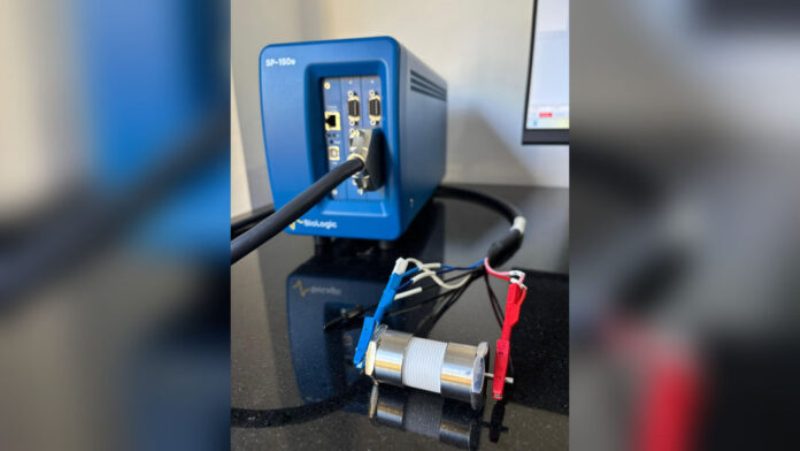Kohima: Researchers at Nagaland University have developed a flexible supercapacitor capable of powering next-generation wearable electronics, electric vehicles (EVs), and renewable energy systems, a breakthrough that could transform energy storage technologies.
This marks the first comparative study of tungsten, vanadium, and cobalt doping in molybdenum diselenide (MoSe₂) for energy storage applications.
Beyond theoretical research, the team successfully built a working prototype of the flexible supercapacitor — demonstrating its practical viability and scalability. While the immediate uses include health-monitoring devices, IoT gadgets, and robotics, the technology’s potential extends to electric vehicles.
Flexible supercapacitors like these could enhance regenerative braking systems, provide quick acceleration boosts, and extend battery lifespans. Experts say such research could reduce India’s dependence on imported batteries while advancing clean energy and storage technologies under the Atmanirbhar Bharat vision.
The research was led by Dr Vijeth H, Assistant Professor, Department of Physics, Nagaland University, who conceptualised and designed the study, along with Pewe-u Marhu, Research Scholar, who carried out the experimental work under his supervision.
The findings were published in RSC Advances, a peer-reviewed journal by the Royal Society of Chemistry.
“This device combines flexibility, high energy storage, and durability — key factors for future portable and wearable technologies,” said Dr Vijeth H.
He added, “Among the tested materials, cobalt dopings showed the most promising results. Using a simple, eco-friendly hydrothermal process, we’ve made the innovation scalable for industrial adoption. This research not only showcases scientific excellence from the North East but also strengthens India’s journey toward sustainable and self-reliant energy solutions.”
Pewe-u Marhu said the next steps include optimising the electrode–electrolyte interface, improving safety with solid-state gel electrolytes, and scaling up the process to pilot-level production. “Industry collaborations are also being explored to bring the technology closer to commercialisation,” she added.
Developed at the Nagaland University’s Advanced Materials for Device Applications (AMDA) Research Laboratory on the Lumami campus, the device uses cobalt-doped molybdenum diselenide (Co@MoSe₂) — a two-dimensional (2D) material known for exceptional conductivity and mechanical resilience. It delivers an energy density of 34.54 W h kg⁻¹, maintains stability over 10,000 charge–discharge cycles, and retains its performance even after repeated bending and twisting.
ALSO READ: Nagaland records 91% surge in SLL crimes, NCRB reports
The research was carried out entirely at Nagaland University, with advanced characterisation support from the Indian Institute of Science (IISc) Bangalore through its INUP Program. Funding was provided by the Anusandhan National Research Foundation (ANRF), Government of India, which is driving a national initiative on 2D materials.















